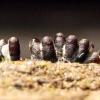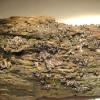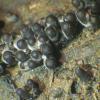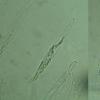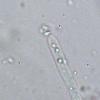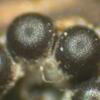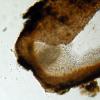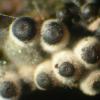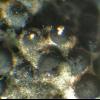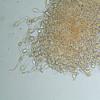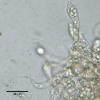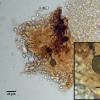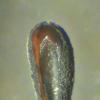
08-01-2026 21:22
 Blasco Rafael
Blasco Rafael
Hola, He recogido esta muestra de Orbilia sobre Re

07-01-2026 10:24
 Danny Newman
Danny Newman
Pezicula sp. on indet. hardwood Appalachian Highl

07-01-2026 22:22
 Danny Newman
Danny Newman
Tatraea sp. on indet. hardwood The Swag, Great Sm

07-01-2026 17:29
 Marc Detollenaere
Marc Detollenaere
Dear Forum,On a barkless Populus I found some smal

10-11-2021 17:33
 Riet van Oosten
Riet van Oosten
Add-on topic http://www.ascofrance.com/forum/7059

07-01-2026 10:05
 Danny Newman
Danny Newman
cf. Chaetospermum on XylariaCosby Campground, Grea

02-01-2026 17:43
MARICEL PATINOHi there, although I couldn't see the fruitbody, I

04-01-2026 17:45
 Stephen Martin Mifsud
Stephen Martin Mifsud
I was happy to find these orange asmocyetes which
Technical question regarding Bombardia
Martin Bemmann,
02-08-2010 23:49
 Hi,
Hi,did someone of you try to make a slide of Bombardia? I find it very hard 1. to get a good section and 2. to get a thin preparation due to the "bouncy" texture of the perithecium. Would KOH be of any help?
I hope, this is a Bombardia... (picture attached) ;-)
All the best,
Martin
Christian Lechat,
03-08-2010 05:32

Re:Technical question regarding Bombardia
Hi Martin,
I think your fungus is not Bombardia, it resembles to Coryne, asexual state of Ascocoryne.
If you want to make a section, it is necessary to dry the specimen before.
Regards,
Christian
I think your fungus is not Bombardia, it resembles to Coryne, asexual state of Ascocoryne.
If you want to make a section, it is necessary to dry the specimen before.
Regards,
Christian
Michel Delpont,
03-08-2010 09:53

Re:Technical question regarding Bombardia
Hi Martin.
I also think that Christian to reason, and that it is not Bombardia;
Regards.
Michel.
I also think that Christian to reason, and that it is not Bombardia;
Regards.
Michel.
Martin Bemmann,
03-08-2010 11:16
Martin Bemmann,
03-08-2010 11:18
Martin Bemmann,
03-08-2010 11:20
Jacques Fournier,
03-08-2010 15:43

Re:Technical question regarding Bombardia
Hi Martin,
the shape of the ascomata are not typical, they even apparently lack a porate ostiole on the photo taken from above, but asci and spores might correspond to this species.
You should check two important things:
first the thick gelatinous layer in the wall . To help make sections try embedding a fresh or rehydrated ascoma in PVA -l actophenol, set it lying on the side and make sections with a new razor blade when it is dry (about 2 days at room temperature). PVA is available through Marcel Lecomte website, link somewhere on Ascofrance.
second, your collection seems immature, incubate it in a plastic box until you get mature ascospores with a brown swollen head.
A very good description and illustrations of this species are in Lundqvist 1972.
Good luck,
Jacques
the shape of the ascomata are not typical, they even apparently lack a porate ostiole on the photo taken from above, but asci and spores might correspond to this species.
You should check two important things:
first the thick gelatinous layer in the wall . To help make sections try embedding a fresh or rehydrated ascoma in PVA -l actophenol, set it lying on the side and make sections with a new razor blade when it is dry (about 2 days at room temperature). PVA is available through Marcel Lecomte website, link somewhere on Ascofrance.
second, your collection seems immature, incubate it in a plastic box until you get mature ascospores with a brown swollen head.
A very good description and illustrations of this species are in Lundqvist 1972.
Good luck,
Jacques
Martin Bemmann,
03-08-2010 16:48

Re:Technical question regarding Bombardia
Hi Jaques,
thank you for your oppinion. I attach a macro of the apical area of the ascomata.
Before I started this thread I tried to make a section of a perithecium embedded in polyethylenglycole (is PVA something else?). The bad result you can see in the next attachment. The perithecium was shrinking in the hot PEG. Maybe I should try to dissolve the PEG in water instead of heating it.
Best regards,
Martin
thank you for your oppinion. I attach a macro of the apical area of the ascomata.
Before I started this thread I tried to make a section of a perithecium embedded in polyethylenglycole (is PVA something else?). The bad result you can see in the next attachment. The perithecium was shrinking in the hot PEG. Maybe I should try to dissolve the PEG in water instead of heating it.
Best regards,
Martin
Martin Bemmann,
06-08-2010 23:50

Re:Technical question regarding Bombardia
Interim report:
Hi everybody,
beeing in captivity in a moist environment for some days now, some ascomata deloped a more distinct ostiolum. Some have discharched spores that are maturing now outside the asci but adhering in lumps. I harvested some of these lumps and show you some pictures below. I already saw two mature brown ovoid spore cells so typical for Bombardia.
I did not have the time to make a preparation for a proper section but I just cut one specimen in half. It shows a very thick gelatinous wall.
I can't find any recent literature to this genus, but I think I can file it as Bombardia bombarda/fasciculata. Obviously it is not found/collected so often (cf. Verbreitungsatlas der Großpilze Deutschlands 2) and therefore variance in habitus is not so well known.
I eagerly wait for well developed spores. If I find them, I will show to complete this thread.
Best regards,
Martin
pictures start with ostioles:
Hi everybody,
beeing in captivity in a moist environment for some days now, some ascomata deloped a more distinct ostiolum. Some have discharched spores that are maturing now outside the asci but adhering in lumps. I harvested some of these lumps and show you some pictures below. I already saw two mature brown ovoid spore cells so typical for Bombardia.
I did not have the time to make a preparation for a proper section but I just cut one specimen in half. It shows a very thick gelatinous wall.
I can't find any recent literature to this genus, but I think I can file it as Bombardia bombarda/fasciculata. Obviously it is not found/collected so often (cf. Verbreitungsatlas der Großpilze Deutschlands 2) and therefore variance in habitus is not so well known.
I eagerly wait for well developed spores. If I find them, I will show to complete this thread.
Best regards,
Martin
pictures start with ostioles:
Martin Bemmann,
06-08-2010 23:51
Martin Bemmann,
06-08-2010 23:52
Martin Bemmann,
06-08-2010 23:53
Peter Welt,
07-08-2010 14:49

Re:Technical question regarding Bombardia
Glückwunsch zu diesen schönen Fund Martin. Typisch ist für Lasiosphaeriacaen die späte Entwicklung der Sporen. Die einzigen Funde der mir aus Deutschland bekannt sind, sind die von Batsch 1785 und der von Fuckel (Nass. Jahrbücher 23-24: 164) Jahr ? aber vor 1869.
Gruß Peter
Gruß Peter
Michel Delpont,
07-08-2010 17:41

Re:Technical question regarding Bombardia
Hi Martin
Congratulations again for this discovery. Bombardia is a rare kind, I have never found, and unfortunately did not have much documentation to help you find the specie. I hope someone can do.
Regards.
Michel.
Congratulations again for this discovery. Bombardia is a rare kind, I have never found, and unfortunately did not have much documentation to help you find the specie. I hope someone can do.
Regards.
Michel.
Martin Bemmann,
07-08-2010 17:57

Re:Technical question regarding Bombardia
Hi Peter and Michel,
actually I did not find it, as I mentioned above it was my workmate who found it and gave it to me for determination. So credits are to her and I will tell her...
Cheers,
Martin
actually I did not find it, as I mentioned above it was my workmate who found it and gave it to me for determination. So credits are to her and I will tell her...
Cheers,
Martin


